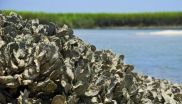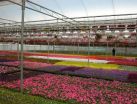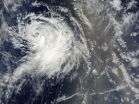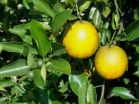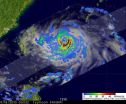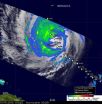(Press-News.org) WEST LAFAYETTE, Ind. - A Purdue University-led research team has uncovered the chemical components of the adhesive produced by oysters, providing information that could be useful for fisheries, boating and medicine.
A better understanding of oysters' ability to stick together to form complex reefs would help those trying to boost the dwindling oyster population, aid in the creation of materials to keep boat hulls clean without harming the environment, and bring researchers one step closer to creating wet-setting adhesives for use in medicine and construction.
Jonathan Wilker, a Purdue professor of chemistry and materials engineering, led the team that analyzed the most common oyster in the United States, Crassostrea virginica, known as the common Eastern oyster. A paper detailing the work is published in the current issue of the Journal of the American Chemical Society.
"With a description of the oyster cement in hand, we may gain strategies for developing synthetic materials that mimic the shellfish's ability to set and hold in wet environments," said Wilker, who has worked on the design of synthetic bioadhesives for more than 10 years. "Dentistry and medicine may benefit from such a material. For instance, it would be great to have a surgical adhesive that could replace staples and sutures, which puncture healthy tissue and create potential sites for infection."
By comparing oyster shells with the material that connects the animals to each other, the researchers were able to determine its chemical composition. The results showed that the adhesive had almost five times the amount of protein and more water than what is found in the shell.
"The adhesive material differed significantly in composition from the shell, which indicates that the oyster produces a chemically distinct substance for sticking together," Wilker said.
Wilker, who also studies mussel and barnacle adhesion, describes the oyster adhesive as more of an inorganic cementlike substance than the organic gluelike material produced by other marine animals.
"The oyster cement appears to be harder than the substances mussels and barnacles use for sticking to rocks," he said. "The adhesives produced by mussels and barnacles are mostly made of proteins, but oyster adhesive is about 90 percent calcium carbonate, or chalk. On its own, chalk is not sticky. So the key to oyster adhesion may be a unique combination of this hard, inorganic component with the remaining 10 percent of the material that is protein."
This 10 percent of oyster cement does bear some similarity to mussel glue in its composition of proteins and the presence of iron.
In earlier studies Wilker found that iron played a key role in the hardening, or curing, of mussel adhesive, and it may serve a similar purpose in the oyster adhesive, he said.
Finding common threads in the sticky substances produced by marine organisms is key to the development of both synthetic adhesives and treatments to prevent the accumulation of these animals on ships.
Hundreds of different marine species attach themselves to ships, increasing drag and reducing sailing speeds. Preventing and controlling their accumulation, called fouling, is a major expense for the world's shipping fleet, Wilker said.
"The current antifouling methods rely on toxicity and ship bottoms are often coated with a copper-based paint that kills marine organisms in their larval states," he said. "If we could figure out a non-toxic a way to defeat the adhesives, we could keep them off ships without harming the environment."
Oysters stick together to reproduce and to protect themselves from predators and large waves. The reefs can stretch for miles and filter large volumes of water, prevent erosion and create a storm wall that strengthens coastlines. In addition, the reefs create a habitat for hundreds of other species, Wilker said.
"Overfishing, pollution and disease have reduced the oyster population by 98 percent or more since the late 1800s," he said. "Many people are now trying to reintroduce the animals to their prior habitats. Perhaps our work will add to the understanding of this shellfish and what is needed for oysters and the larger coastal ecosystem to thrive."
The Office of Naval Research and the National Science Foundation funded this research. Co-authors of the paper include Purdue graduate students Jeremy Burkett and Lauren Hight, and Paul Kenny of the Baruch Marine Field Laboratory at the University of South Carolina.
Wilker and his team will next investigate the interaction of the different components within oyster cement and use this information for developing new synthetic materials.
INFORMATION:
Writer: Elizabeth K. Gardner, 765-494-2081, ekgardner@purdue.edu
Sources: Jonathan Wilker, 765-496-3382, wilker@purdue.edu
Joshua A. Chamot, National Science Foundation, 703-292-7730, jchamot@nsf.gov
Related websites:
Jonathan Wilker research page: http://www.chem.purdue.edu/wilker/
NSF news release: http://www.nsf.gov/news/news_summ.jsp?cntn_id=117578
PHOTO CAPTION:
An oyster reef in the Baruch Marine Field Laboratory on the South Carolina coast. (Photo courtesy of Jonathan Wilker/Purdue University)
A publication-quality photo is available at http://news.uns.purdue.edu/images/2010/oyster-research.jpg
Abstract on the research in this release is available at: http://www.purdue.edu/newsroom/outreach/2010/100920WiseSDS.html
Purdue researcher cracks open secret of oysters' ability to stick together
2010-09-21
ELSE PRESS RELEASES FROM THIS DATE:
Rotating high-pressure sodium lamps provide flowering plants for spring markets
2010-09-21
EAST LANSING, MI—When consumers visit garden centers in spring they will most likely buy flowering ornamental plants that are ready for their home gardens. Studies have shown that consumers favor plants that are already in flower rather than those that are "vegetative"—a preference that can present multiple challenges for commercial growers.
To satisfy consumers' wishes, producers of ready-to-flower ornamentals like bedding plants and perennials start growing crops far in advance of the spring buying season, often during the dark and short days of winter. When the days ...
NASA sees Tropical Storm Julia getting 'dusted'
2010-09-21
Dust has been blowing into the Eastern Atlantic Ocean from Africa's Saharan Desert, and a NASA satellite captured some of that dust east of Tropical Storm Julia.
NASA's Moderate Resolution Imaging Spectroradiometer (MODIS) instrument on the Terra satellite captured a visible image of Tropical Storm Julia on Sept. 18 at 13:50 UTC (9:50 a.m. EDT) and noticed a large area of Saharan dust over the Atlantic Ocean, to Julia's east.
On Sept. 20 at 5 a.m. EDT, Julia was still holding on to tropical storm status with maximum sustained winds near 45 mph. Julia was located about ...
NASA satellites and aircraft studied Hurricane Karl before it faded
2010-09-21
Hurricane Karl made landfall near Veracruz, Mexico on Friday, Sept. 17 and moved inland over Mexico's rugged terrain, which took the punch out of the storm. As Karl was moving into Mexico, NASA aircraft and NASA satellites were gathering data from this storm that jumped from a tropical storm to a Category 3 hurricane the day before.
Karl had maximum sustained winds of 115 mph when it made landfall on Friday afternoon, Sept. 17. That made Karl a Category three hurricane on the Saffir-Simpson scale, and a major hurricane to boot.
On that day, NASA's Genesis and Rapid ...
Winter drought stress can delay flowering, prevent fruit loss in orange crops
2010-09-21
LAKE ALFRED, FL—Successful mechanical harvesting of perennial fruit crops requires efficient, economical harvesting systems that do not reduce trees' production life or diminish fruit quality. Most of the world's citrus is now harvested manually, but the use of efficient and lower-cost mechanical harvesting techniques is expected to increase in the next few years, especially in the large citrus plantations in Florida and Brazil. The citrus industry is ramping up efforts to extend the harvest season past June, when the following year's crop becomes large enough to be susceptible ...
NASA captures very heavy rain in Typhoon Fanapi and 2 landfalls
2010-09-21
Taiwan experienced a landfall and a soaking from Typhoon Fanapi, and NASA and JAXA's TRMM satellite noted a large area of very heavy rain in the system before it made landfall this weekend. NASA's Aqua and Terra satellites also captured impressive visible images of Fanapi just before the Taiwan landfall, and as it was making landfall in eastern China very early today.
The Tropical Rainfall Measuring Mission satellite known as TRMM captured an image of Typhoon Fanapi's rainfall on Sept. 18 at 0653 UTC (2:53 a.m. EDT) after the typhoon had intensified to 105 knots (~121 ...
Introducing 'Champagne', new disease-resistant fig
2010-09-21
BATON ROUGE, LA—The ancient fig tree, first imported to the United States during the 16th century, thrives in areas of California and the South Atlantic and Gulf Coast areas of the U.S. One of the most popular trees grown in Southern backyards, fig is favored for its versatile fruit and low-maintenance production.
Charles E. Johnson, Ed O'Rourke, and James E. Boudreaux, from the Louisiana State University Agricultural Center in Baton Rouge, introduced a new fig they named "Champagne" in a recent issue of HortScience. According to the report, the new fig performed well ...
NASA's MODIS and AIRS instruments watch Igor changing shape, warming over 3 days
2010-09-21
The Moderate Resolution Imaging Spectroradiometer or MODIS, is an instrument that flies on NASA's Aqua and Terra satellites and provides incredible views of tropical cyclones like Hurricane Igor, from its vantage point in space. Imagery from the MODIS instruments on these two satellites captured from Sept. 18 to 20 showed that powerful Hurricane Igor in the Atlantic Ocean is morphing from a rounded storm to more of a comma-shaped storm.
The MODIS instrument on NASA's Terra satellite captured a visible image of Igor at 11:30 am on Sept. 18, while MODIS in the Aqua satellite ...
Food for thought, er, well...
2010-09-21
Ever wonder why it's such an effort to forget about work while on vacation or to silence that annoying song that's playing over and over in your head?
Mathematicians at Case Western Reserve University may have part of the answer.
They've found that just as thinking burns energy, stopping a thought burns energy - like stopping a truck on a downhill slope.
"Maybe this explains why it is so tiring to relax and think about nothing," said Daniela Calvetti, professor of mathematics, and one of the authors of a new brain study. Their work is published in an advanced online ...
Low-calorie cheesecake? Why we have trouble estimating calories
2010-09-21
When it comes to estimating calorie counts, Americans aren't really on the ball. According to a new study in the Journal of Consumer Research, this may be because of the order in which we encounter the food.
"The sequence in which items are considered often influences our evaluations of these items," writes author Alexander Chernev (Northwestern University). "The focus on sequential estimation is important because many meals are ordered and consumed sequentially rather than at once. Moreover, to control their daily calorie intake, people often estimate not only the amount ...
Santa Fe homeowners weigh in on landscape preferences
2010-09-21
LAS CRUCES, NM—While municipalities may mandate communitywide water conservation measures, individuals—particularly homeowners—can make significant contributions to water conservation in urban environments. Hoping to provide urban planners with more information about how residents' landscape preferences affect municipal water supplies, a team from New Mexico State University surveyed homeowners in Santa Fe about their attitudes toward high desert plants. Rolston St. Hilaire, Dawn M. VanLeeuwen, and Patrick Torres reported on their study of residents' preferences for urban ...
